Mappings for Special Functions on Cantor Sets and Special Integral Transforms via Local Fractional Operators
Abstract
The mappings for some special functions on Cantor sets are investigated. Meanwhile, we apply the local fractional Fourier series, Fourier transforms, and Laplace transforms to solve three local fractional differential equations, and the corresponding nondifferentiable solutions were presented.
1. Introduction
Special functions [1] play an important role in mathematical analysis, function analysis physics, and so on. We recall here some very well examples, the Gamma function [2], hypergeometric function [3], Bessel functions [4], Whittaker function [5], G-function [6], q-special functions [7], Fox’s H-functions [8], Mittag-Leffler function [9], and Wright’s function [10].
The Mittag-Leffler function had successfully been applied to solve the practical problems [11–15]. For example, the Mittag-Leffler-type functions in fractional evolution processes were suggested [15]. Solutions for fractional reaction-diffusion equations via Mittag-Leffler-type functions were discussed [16]. The Mittag-Leffler stability of fractional order nonlinear dynamic systems was presented [17]. Models based on Mittag-Leffler functions for anomalous relaxation in dielectrics were proposed [18]. In [19], the anomalous relaxation via the Mittag-Leffler functions was reported. The continuous-time finance based on the Mittag-Leffler function was given [20]. In [21], the fractional radial diffusion in a cylinder based on the Mittag-Leffler function was investigated. In [22], the Mittag-Leffler stability theorem for fractional nonlinear systems with delay was considered. The stochastic linear Volterra equations of convolution type based on the Mittag-Leffler function were suggested in [23].
Recently, based on the Mittag-Leffler functions on Cantor sets via the fractal measure, the special integral transforms based on the local fractional calculus theory were suggested in [24]. In this work, some applications for the local fractional calculus theory are studied in [24–36]. The main aim of this paper is to investigate the mappings for special functions on Cantor sets and some applications of special integral transforms to nondifferentiable problems.
The paper is organized as follows. In Section 2, the mappings for special functions on Cantor sets are investigated. In Section 3, the special integral transforms within local fractional calculus and some applications to nondifferentiable problems are presented. Finally, in Section 4, the conclusions are presented.
2. Mappings for Special Functions on Cantor Sets
In order to give the mappings for special functions on Cantor sets, we first recall some basic definitions about the fractal measure theory [25].
In this way, we define some real-valued functions on Cantor sets as follows [24–26].
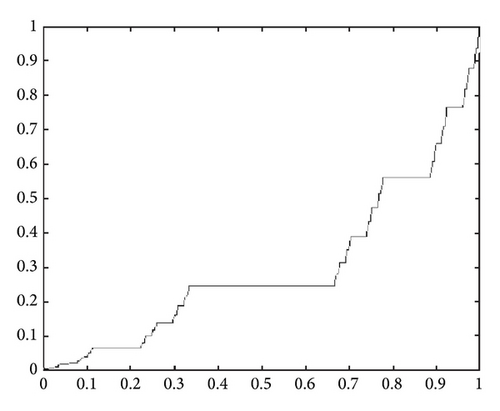
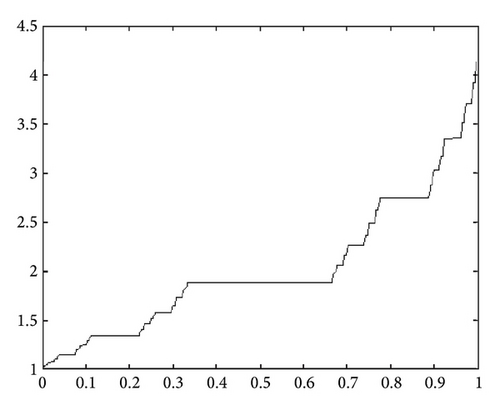

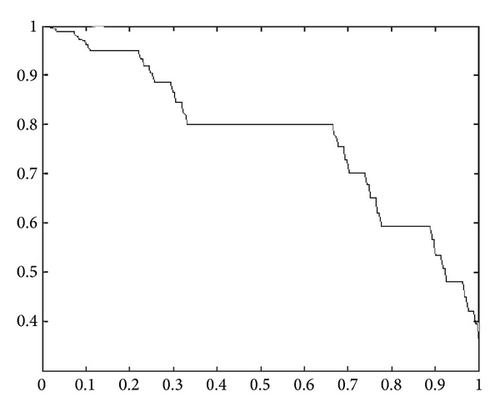
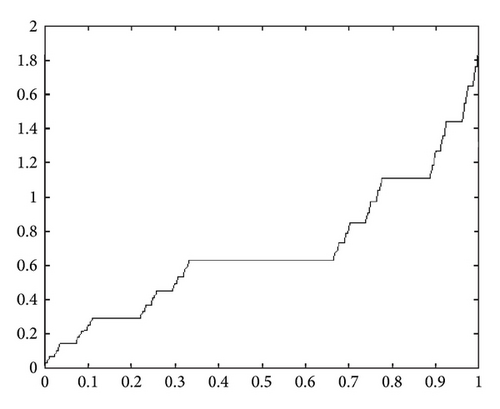
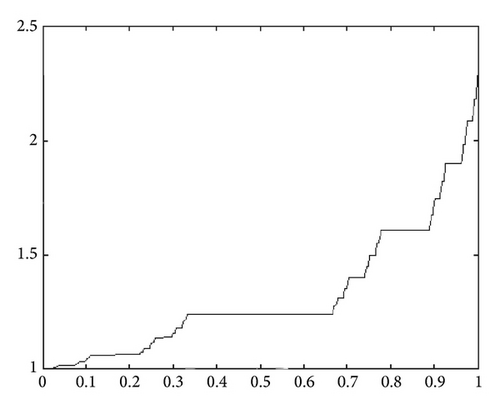
3. Special Integral Transforms within Local Fractional Calculus
In this section, we introduce the conceptions of special integral transforms within the local fractional calculus concluding the local fractional Fourier series and Fourier and Laplace transforms. After that, we present three illustrative examples.
3.1. Definitions of Special Integral Transforms within Local Fractional Calculus
We here present briefly some results used in the rest of the paper.
For more details of special integral transforms via local fractional calculus, see [24, 32, 33] and the references therein.
3.2. Applications of Local Fractional Fourier Series and Fourier and Laplace Transforms to the Differential Equation on Cantor Sets
We now present the powerful tool of the methods presented above in three illustrative examples.
Example 1. Let us begin with the local fractional differential equation on Cantor set in the following form:
Following (20), we have
Example 2. We now consider the following differential equation on Cantor sets:
Application of local fractional Fourier transform gives
Example 3. Let us find the solution to the differential equation on Cantor sets
Taking the local fractional Laplace transform, from (32), we have
4. Conclusions
In this work, we investigated the mappings for special functions on Cantor sets and special integral transforms via local fractional calculus, namely, the local fractional Fourier series, Fourier transforms, and Laplace transforms, respectively. These transformations were applied successfully to solve three local fractional differential equations, and the nondifferentiable solutions were reported.




